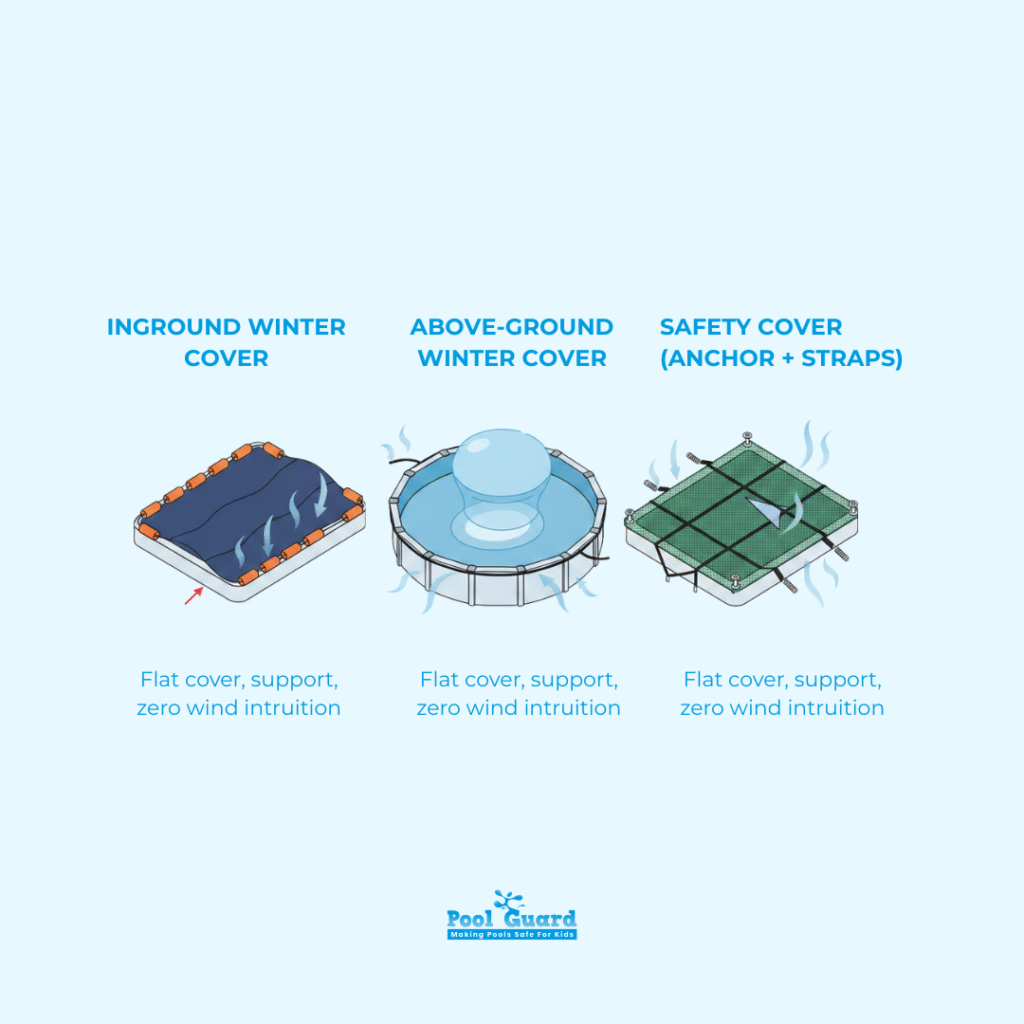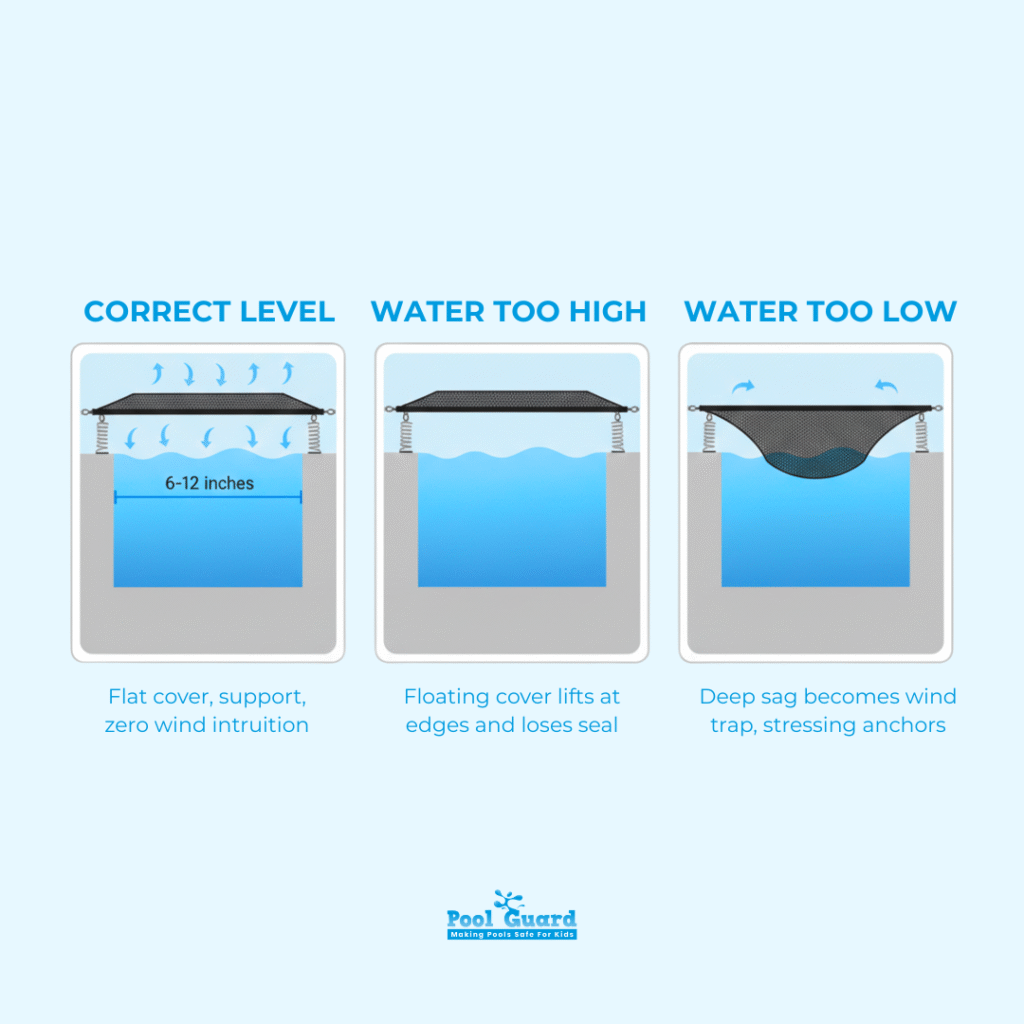Most pool covers don’t blow off because the wind is unusually strong — they blow off because something in the setup is wrong. How to keep a pool cover from blowing off always comes back to the fundamentals: proper tension, correct overlap, functional anchors, and a stable water level that doesn’t create lift points. Wind uplift only wins when the cover is loose, misaligned, or unsupported, which means the real failure is installation or maintenance — not the weather.
If your cover is worn, stretched, or still slipping even after you’ve fixed the basics, you’re past the point of adjustments. At that stage, upgrading to an ASTM-rated safety cover is the only reliable way to eliminate wind-related issues for good.
Different covers fail for different reasons. The right solution depends on what you’re working with:
Anchors + straps + springs. Should never blow off the mesh pool cover unless components are failing or tension is incorrect.
Same as mesh but heavier; easier to tension correctly but requires proper water level to avoid sagging.
Most vulnerable to wind because they’re weight-dependent, not anchored.
Cable + winch system + optional cover seal. These blow off when the cable is loose or shrink-wrap perimeter is missing.

Winter covers rely on physics — weight, overlap, and perimeter seal. When any of those fail, the wind wins.
Winter covers blow off when the weights are sparse or inconsistent.
Industry data from the APSP shows that incomplete perimeter weighting is a top cause of winter cover blow-off.
Your cover needs 12–18 inches of deck overlap on all sides. Less, and wind slips under. More than 18 inches can fold or billow, also allowing uplift.
Keep the perimeter free from leaves, sticks, or raised edging that interrupts the seal.
Some winter covers have built-in cable channels.
Above-ground pools get the worst wind exposure, so setup must be exact.
Most blow-offs come down to one thing: the cable wasn’t fully tightened.
A cover seal is essentially a perimeter shrink-wrap that blocks wind from getting underneath.
Air pillows reduce billowing by supporting the center of the cover.
Let’s be blunt: a safety cover should not blow off — ever.
If it does, something in the system has failed.
Anchors must sit perfectly flush with the deck.
Use an anchor key to raise or lower them to spec.
Straps should compress springs about halfway.
Tension must be even across the entire perimeter.
This is where most people pretend not to see reality.
Any of these create play that wind exploits.
This is the hidden variable people ignore.

Here are the simple tools that make or break winter security:
These are the real culprits behind 90% of cover failures:
If you’re fighting the cover every winter, something structural is failing.
Signs you need a new cover:
Pool Guard™ safety covers are ASTM-rated, custom-measured, and engineered to eliminate wind blow-offs entirely.
Run this list once a week — it takes two minutes and saves two months of headaches:
A custom-fit safety cover eliminates 90% of wind-related issues.
Pool Guard™ covers meet ASTM F1346, are custom-measured on-site, and are built specifically to prevent wind blow-offs.
Most of the time, wind isn’t the real issue — improper setup is. How to keep a pool cover from blowing off comes down to getting the basics right: proper tension, correct overlap, working anchors, and the right water level. If your cover still lifts or shifts after you’ve tightened up those fundamentals, it’s not a wind problem anymore — it’s a worn-out cover. At that point, the only reliable solution is upgrading to a custom, ASTM-rated safety cover that stays locked down no matter the conditions.
Please fill out the form below with your information. Your local dealer will be notified about your inquiry.
Please fill out the form below with your information. Your local dealer will be notified about your inquiry.